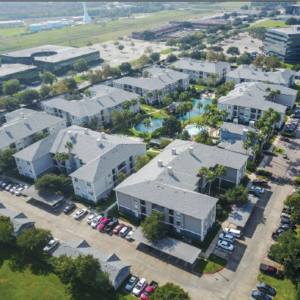Choosing an organization structure within a preferred equity or mezzanine deal is an important step along the way to a smooth closing. Though there are many ways to structure the entities and individuals involved in a transaction, understanding the elements of the most common structures will help sponsors better choose one that meets the needs of their equity and the senior lender.
Download the PDF version of this report here:
Preferred Equity
Investors can use preferred equity when the mortgage loan and common equity do not fill the capital stack completely. In order to add preferred equity to any transaction, investors must structure their entities to accommodate the addition.
The Property-Owning Entity
Many preferred equity organization structures begin with a Limited Liability Corporation (LLC) which will own the Property. This entity will often be formed in Delaware due to its corporation-friendly statutes, but there can be exceptions as required by state or local laws in the area where the Property is located.
This Property-owning LLC may then have a single Member which is the entity owned by the preferred equity investor and the sponsor (the Company) and which is also a Delaware LLC by preference. Another common organization structure has the preferred equity investor and the sponsor as the Members of the Property-owning LLC with no entity in between.
The Members
Whichever entity in the structure is the Company, a typical formation will have two Members.
The Capital Member is the entity through which the preferred equity investor enters the structure. It may be another Delaware LLC, depending on the provider’s requirements.
The Capital Member often is not the Member which manages the Company, however; that will typically be the entity owned by the sponsor, often known as the Operating Member. This entity may take several forms, depending on the sponsor’s common equity requirements, including being a Delaware LLC. Often, a preferred equity provider will require that the common equity consolidate under this single Operating Member to avoid complications in ownership and management of the Company.
Within the Operating Member entity, the sponsor generally arranges its equity structure based on its investor requirements and, so long as the Operating Member itself retains control rights within its structure, that structure is up to the sponsor.
The Waterfall
The typical organization structure for preferred equity is designed to enable the preferred equity provider to participate in 100% of the excess cash flow. Thus, the Property-owning entity will be organized so that no other common equity entity or individual sits in a position that would subordinate the preferred equity investor’s return.
Mezzanine Loan
Investors may choose mezzanine financing to complete the capital stack instead of preferred equity, but the addition of a mezzanine loan to the transaction also requires an investor to structure their entities in order to accommodate it.
The Property-Owning Entity
As with a preferred equity structure, a typical mezzanine organization structure features a single-member Property-owning entity, often a Delaware LLC. Similarly, this Property-owning entity may also have a single member. However, the mezzanine structure diverges from a preferred equity structure here.
The Members
Unlike a typical preferred equity structure, a mezzanine structure will not have the mezzanine lender as a member of any of the entities. Instead, the Property-owning entity’s single member often is the sponsor’s equity investor. That entity will then assign its security interest in the Property-owning entity to the mezzanine lender. The single Member owned by the sponsor is often an LLC but may take another form as required by state or local law or the sponsor’s investors.
The Waterfall
Like with preferred equity, the mezzanine organization structure is designed to situate the mezzanine lender above the sponsor’s common equity. However, this is accomplished by an assignment of security interests to the mezzanine lender rather than an actual ownership interest via a Capital Member. The typical organization structure is thus less complex than a preferred equity organization structure, since fewer entities are included.
What It All Means
Understanding the components of a typical preferred equity or mezzanine organization structure will enable sponsors to choose the best format for any transaction. While some parts of the structure will depend on things such as state and local laws or the requirements of common equity investors, the overall composition may follow the general outline as discussed. The closer a structure is to the typical outline, the less time will be spent at the front-end negotiating organization, saving time during the closing process.




